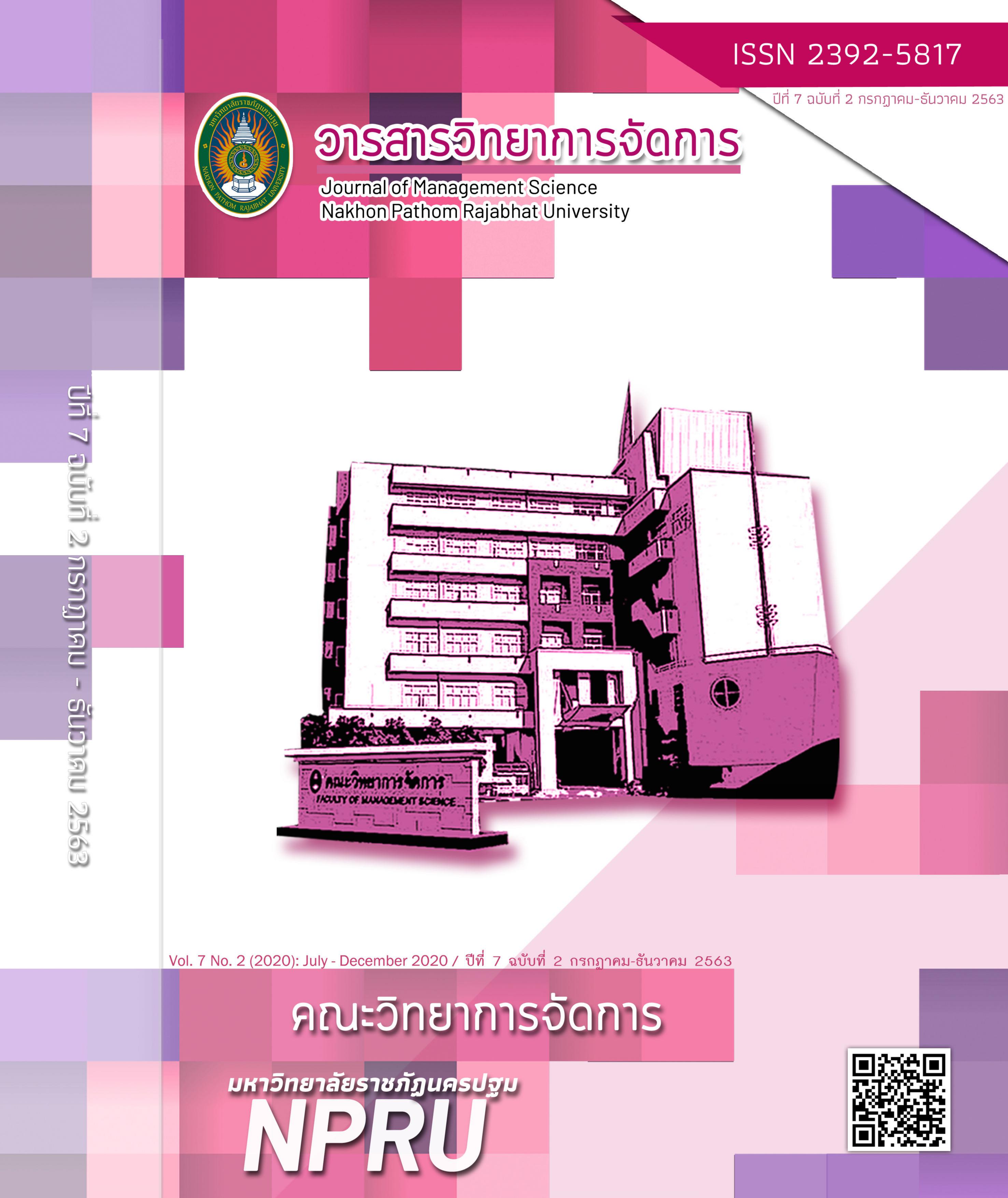Factors Affecting the Mission Development of the Faculty of Pharmacy, Mahasarakham University.
Main Article Content
Abstract
This research aimed to 1) study the factors affecting the mission development of the Faculty of Pharmacy, Mahasarakham University, 2) study mission development level of the Faculty of Pharmacy, Mahasarakham University, 3) study the relationship between factors affecting the mission development and mission development level of the Faculty of Pharmacy, Mahasarakham University and, 4) study approaching methods in enhancing mission development of the Faculty of Pharmacy, Mahasarakham University.
This study used mixed method research by using quantitative and qualitative study. Samples of the quantitative research were students of Faculty of Pharmacy, Mahasarakham University, totally 256 samples through the data collecting by questionnaires. Informants of the qualitative research were comprised with 1) representatives of Faculty of Pharmacy, totally 9 subjects, and 2) representatives of Student Faculty of Pharmacy, totally 9 subjects through the focus group discussion method.
The research findings were (1) Factors affecting the mission development of the Faculty of Pharmacy, in overall, was found in high level, which may arranged the factors as follows: (1.1) Faculty policy factor, (1.2) Technology factor, (1.3) Working approach of executive factor, (1.4) Student potential factor, (1.5) Resource of learning management factor, and (1.6) Personnel potential factor (2) Mission development level of the Faculty of Pharmacy, in overall, was found in high level, which may arranged the aspects as follows: (2.1) Producing graduates aspect, (2.2) Pharmaceutical research aspect, (2.3) Community health service aspect, and (2.4) Pharmaceutical vocation preservation aspect (3) The results of the correlation coefficient analysis found that factors affecting the mission development had statistically significant correlation with the mission development level of the Faculty of Pharmacy at .05 level, and (4) approaching methods in enhancing mission development of the Faculty of Pharmacy, can be concluded as follows: (4.1) Faculty policy should be clear and should urge in any working aspect to be in accordance with the mission, (4.2) Should encourage in technology application for learning, (4.3) Should focus on students security by developing a safe laboratory and conducting some technology to be more effective in producing medicines, and (4.4) Should contribute a budget to students for organizing public events or activities.
Article history: Received 17 August 2019
Revised 23 November 2019
Accepted 28 November 2019
SIMILARITY INDEX = 1.17%
Article Details
The views and opinions of the article appearing in this journal are those of the author. It is not considered a view and responsibility of the editorial staff.
References
คณะเภสัชศาสตร์ มหาวิทยาลัยมหาสารคาม. ข้อมูลเกี่ยวกับคณะ. [ออนไลน์]. ค้นเมื่อ 25 มกราคม 2562 จาก http://pharmacy.msu.ac.th/home
ทิพย์วรรณ จูมแพง กุหลาบ รัตนสัจธรรม และวัลลภ ใจดี. (2555). ปัจจัยที่มีอิทธิพลต่อความสำเร็จในการสำเร็จในการพัฒนาคุณภาพการบริหารจัดการภาครัฐตามการรับรู้ของบุคลากรในหน่วยงานระดับเขต กระทรวงสาธารณสุข. The Public Health Journal of Burapha University. 7 (2) ,38-52
ปรียาพร วงศ์อนุตรโรจน์. (2548). จิตวิทยาอุตสาหกรรม. กรุงเทพมหานคร : ศูนย์สื่อเสริมกรุงเทพมหานคร.
เพ็ญพร ทองคำสุก. (2553). ตัวแบบสมการโครงสร้างภาวะผู้นำการเปลี่ยนแปลงของผู้บริหารสถานศึกษาขั้นพื้นฐาน. ดุษฎีนิพนธ์ปรัชญาดุษฎีบัณฑิต สาขาการบริหารการศึกษา มหาวิทยาลัยขอนแก่น.
วรเดช จันทรศร (2551). ทฤษฏีการนำนโยบายสาธารณะไปปฏิบัติ. กรุงเทพมหานคร: พริกหวานกราฟฟิค.
วัชรินทร์ สุทธิศัย. (2555). ปัจจัยที่มีผลต่อความสำเร็จในการนำนโยบายมหาวิทยาลัยราชภัฏไปปฏิบัติ : กรณีศึกษามหาวิทยาลัยราชภัฏกลุ่มภาคตะวันออกเฉียงเหนือ. รัฐประศาสนศาสตรดุษฎีบัณฑิต มหาวิทยาลัยศรีปทุม.
ศุภชัย ยาวะประภาษ (2540). นโยบายสาธารณะ. กรุงเทพมหานคร: จุฬาลงกรณ์มหาวิทยาลัย.
Becker,S.W and Neuhauser, D. (1975). The Efficient Organization. New York: Elsevier Scientific Publishing Co.
Brewer, G. D. and Deleon, P. (1983). The Foundations of Policy Analysis. New York : The Dorsey Press.
Certo, S.C., and Peter, J.P. (1991). Strategic Management: Concept and Applications. New York : MacGraw-Hill.
French, Wendell L., and Cecill, H. Bell, Jr. (1990). Organizational Development: Behavioral Science Interventions for Organization Improvement. (4th ed.). Englewood Cliffs, New Jersey : Prentice- Hall.
Gibson, L. J., Ivancevich, J. M. and Donnelly, J. H. (1997). Organizations, Behavior Structure. Processes. (9th ed.). United States: The McGraw-Hill Companies.
Kast, F. E., and Rosenzweig, J. E. (1985). Organization and management. ( 4th ed.). New York: McGraw-Hill.
Krejcie, R. V. and Morgan, D. W. (1970). Determining Sample Size for Research Activities. Educational and Psychological Measurement, 30 (3), 607-610.
Lipsky, M. (1980). Street-Level Bureaucracy: Dilemmas of the Individual in Public Services. New York: Rusell Sage Foundation.
Nakamura, Robert T. and Smallwood Frank. (1980). The Politics of Policy Implementation. New York: St.Martin’s Press.


